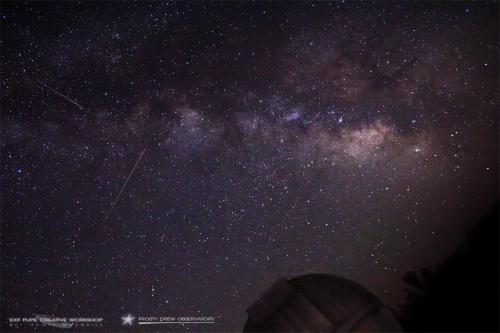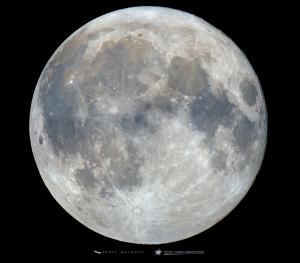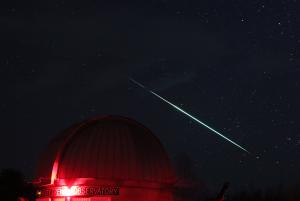Celebration of Space - May 5, 2023
At 1:37 pm ET this afternoon, Friday, May 5, 2023, the Moon will orbit into a position where it is on the opposite side of Earth than the Sun. We call this opposition, but you probably call it the full Moon. During this time, the entire daytime side of the Moon is facing Earth, with the other side of the Moon experiencing night. On the day of the full Moon, the Moon will rise with the setting Sun, and set with the rising Sun, keeping the Moon above the horizon for the entire nighttime period. Many first time sky watchers think that the full Moon is likely the best night to be out observing the sky, where it is actually the worst night to be out. This is because the full Moon is so bright that it will illuminate Earth’s atmosphere (like the Sun does) to the point where most objects in space become too dim to see. A similar effect that light pollution has on the atmosphere. But the Moon is also the closest celestial object to Earth, so getting out to see it in the sky is quite mesmerizing.
The May full Moon carries the moniker, The Full Flower Moon, which is quite an obvious name for this month’s full Moon. You will notice that there are a lot of blooms coming out around the region as we move into the final days of spring. Alternative names for the May Moon are the Budding Moon, the Planting Moon, the Frog Moon, and the Moon of Shedding Ponies. Regardless of what you call the May Moon (I think most tenured sky watchers would call it annoying), be sure to step outside this evening and catch a view of the Full Flower Moon of May, and welcome the second half of spring in the Northern Hemisphere.
This past Monday, May 1, 2023 was May Day, which is a notable day in astronomy. It is one of the four cross quarter days of the year. Cross quarter days mark the half way point between the Equinoxes and Solstices. May Day kicks off the second half of the Northern Hemisphere spring. In 2023, this is apparent due to the later sunsets, and young leaves. But temperatures, this year, have certainly been quite cool for May, which has kept the mosquitoes at bay, for now. Other cross quarter days of the year are Lamas in August, Halloween (Samhain) in October, and Groundhog Day in February.
Overnight tonight, May 5-6, 2023, the annual Eta Aquariid Meteor Shower will peak. Bringing with it an increase in regular meteor activity by upwards of 50 meteors per hour, the Eta Aquariids are the second notable meteor shower of the viewing season. The Eta Aquariid shower is possibly a product of comet 96P/Machholz, which is a periodic comet with an orbital period 5.29 years. It is also a sungrazer, which means that the comet has a very elliptical orbit and will enter the solar corona during its closest approach to the Sun (perihelion). Every May, Earth will enter the debris field of the comet, which intersects our orbit, with the morning of May 6th, being the time that we interact with the densest region of that debris field. Tiny dust-sized pieces of the comet will enter Earth’s atmosphere at nearly 41 miles per second and burn up. The radiant point of the shower, which is where all meteors appear to radiate from in the sky, is the constellation Aquarius, and in 2023, it is about 10° above Saturn in the morning sky. The Eta Aquariid shower certainly favors the Southern Hemisphere, and requires a morning without the Moon present. With the full Moon being with us overnight tonight, the 2023 Eta Aquariid peak will be quite underwhelming. Regardless, if you are up for trying, you will need to be at a location with an open view of the night sky, ideally near an object that you can use to block the Moon from your view, and be there for 3:00 am. Lay on your back with your feet orientated towards the SW, and look to the zenith (top of the sky), and you just may spot some of the brighter meteors.
For the last couple of weeks we have been enjoying fabulous evening passes of China’s space station, Tiangong. Well these family friendly, evening passes will be wrapping up over the next few nights, almost just in time for the International Space Station (ISS) to return to the evening sky. Both stations orbit Earth inclined to Earth’s equator. The ISS is 51° inclined, and Tiangong is about 42° inclined. The inclination of their orbits will place the stations over our region, during optimal viewing times, in cycles throughout the year, which switch back and forth from the morning hours to the evening hours. Starting on May 31, 2023, Tiangong will commence predawn morning passes over our region. Here are the last notable passes of Tiangong for the evening period until June 14, 2023:
Fri, May 5 at 8:15 pm, starting in the W, rising to 80°, heading towards the ESE ← Awesome pass!
Sat, May 6 at 8:51 pm, starting in the W, rising to 41°, heading towards the SW, and into orbital sunset
Sun, May 7 at 9:27 pm, starting in the WSW, rising to 17°, and into orbital sunset
Mon, May 8 at 8:25 pm, starting in the W, rising to 27°, heading towards the SE
The listed pass times are applicable to Southern New England, and acceptable for the Northeast region. The ISS will start its next cycle of evening passes on May 11, 2023. Until then, step out and enjoy a pass of Tiangong on a nice springtime evening this weekend.
- Author:
- Scott MacNeill
- Entry Date:
- May 5, 2023
- Published Under:
- Scott MacNeill's Columns





